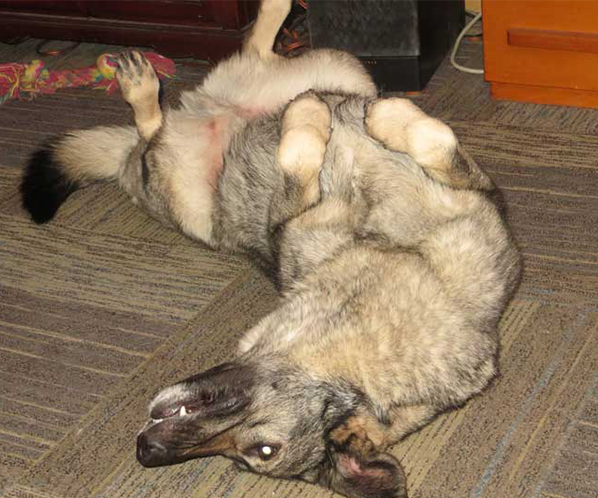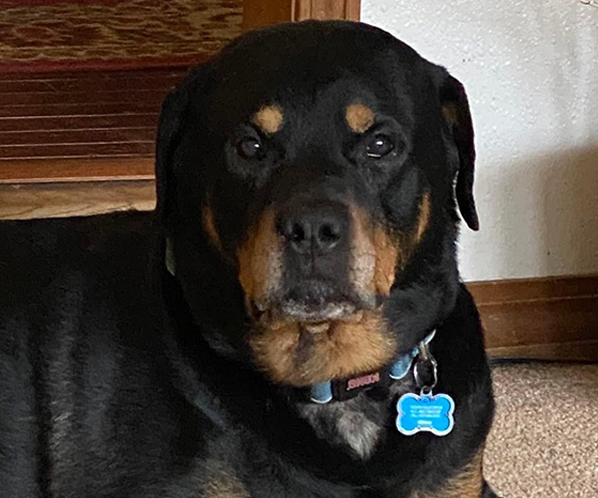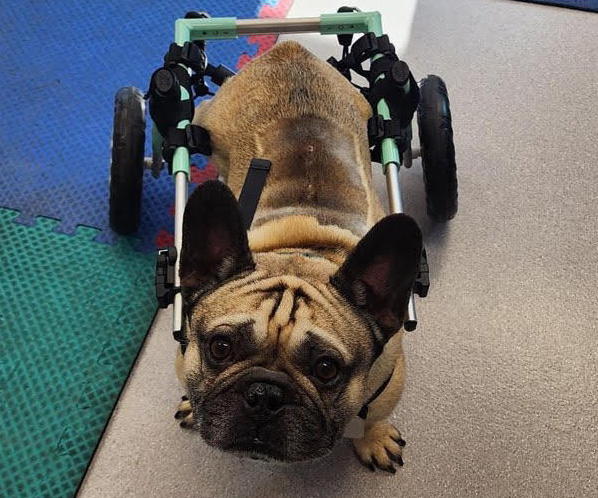Post-Operative Guidelines
Post-Operative Guidelines
The following instructions are general guidelines for the aftercare of a pet following most surgeries. More specific guidelines for your individual pet will be provided by your primary veterinarian upon discharge.
Exercise
- 10-14 days of activity restriction is needed for general soft tissue healing.
- Longer restriction periods are typically required for orthopedic procedures (6-10 weeks).
- No running, jumping, rough play, staircases, or long leash walks.
- Outside on a leash for elimination purposes only.
- Confined inside to a crate, pen, or small room.
Feeding
- In most cases, you may resume feeding a normal diet. Because of receiving anesthesia, feeding smaller meals for the first 24-48 hrs is best (ie. 3 smaller meals versus 2 larger meals).
- If no interest in eating, you can offer boiled/steamed white rice, low fat cottage cheese, boiled skinless chicken breast, or baby food (turkey, chicken, beef flavored).
- Most pets prefer canned food over dry food during the immediate recovery period.
- If your pet had oral surgery, they will likely be on a soft food only diet for 3 weeks. No bones, sticks, ice, or hard toys for 2 months.
Bathing
- Do not bathe until all skin staples, sutures, and/or bandages are removed.
Elizabethan Collar
- Please keep an e-collar on at all times to prevent licking/chewing of the incision. Licking can predispose to incisional infection.
- An e-collar is not needed if the incision is on the neck (use a bandana or buff to prevent scratching instead) or chest (a t-shirt is sufficient to prevent scratching and to keep the incision clean).
Incision Site
- Check the incision site(s) daily and take notice of any changes in appearance. Too much activity or tension at the surgery site may cause a seroma (collection of bloody fluid) or incisional dehiscence (break down and opening of the incision).
- A seroma will resolve on its own with activity restriction, warm compressing, and time.
- Mild redness and swelling around the surgery site are normal. A noticeable increase in the degree of redness, pain, swelling, drainage, or incisional breakdown should be discussed with your primary veterinarian.
- For most incisions, you can apply an ice compress for 10 min 2-4 times a day for 3 days. After 3 days, you can apply a warm compress for 3 days, or until swelling resolves. A warm compress can be made by placing a warmed wet washcloth in a plastic bag wrapped in a light towel. If it is not too hot for your skin, it should be ok for your pet. Never use ice or warm compresses on skin grafts or skin flaps.
Bandages
- Your pet may have a leg wrap on that is a “band-aid” for where the IV catheter was placed for anesthesia. It should be removed in 1 hour.
- If your pet is sent home with a forelimb or hind limb bandage, it is very important that you monitor the bandage closely for soilage, slippage, foul odor, toe swelling, or discomfort. Use the medi-paw when outside and remove it when inside. Please notify your primary veterinarian immediately with any concerns, especially if the bandage is bothering your pet or becomes significantly wet. A wet bandage can cause skin wounds and necrosis of the paw pad leading to amputation if severe enough.
- It is best to use a hard e-collar to protect the bandage from being chewed on. If the bandage becomes damaged, please have it changed as soon as possible. Never use duct tape or other non-stretchy, non-porous materials to patch it up at home.
- Bandages should always be changed weekly, even if in good condition. Sometimes they require more frequent changes for wound evaluation.
Other
- Monitor for any abnormal behavior, pain, vomiting, diarrhea, lethargy, anorexia, weakness, respiratory distress or coughing and call your primary veterinarian with any concerns.
- It is normal for pets not to defecate for several days after surgery (due to anesthesia, oral medications, fasting, stress, etc.). If it has been 5 days, try adding cottage cheese or canned pumpkin to the diet.
Rechecks
- Your primary veterinarian will let you know when your pet should be re-examined after discharge. The first bandage change after taking your pet home should occur in 5-7 days, unless instructed otherwise. Most incisional staples and sutures can be removed in 10-14 days.
Biopsy Results
- In general, it takes about 1-2 weeks to receive a final biopsy report (longer if the sample includes bone). After tumor removal, many pets will be referred to a veterinary oncologist for additional recommendations regarding adjunctive treatment options (tumor-specific vaccines or injections, oral or injectable chemotherapy, electrochemotherapy, radiation therapy). Even if you do not wish to pursue additional treatment options, a consultation with an oncologist is still highly encouraged. An oncologist can provide you with more detailed information regarding the tumor type, metastatic potential and tumor monitoring, overall prognosis, and expected survival. With the oncologist’s expertise, you can then make the best decision for you and your pet.
Find out What Your Neighbors Are Saying About Us

Dr. Serratore performed surgery on my 11-year-old male GSD on Thursday, November 3rd to remove a large and probably malignant tumor from his throat. She did a magnificent job, and my boy (Qanuk) was able to come home with me Thursday afternoon. He is doing just great, eating well and wanting to play! Dr. Serratore was extremely professional and worked very hard to give me all of our options along with their pros and cons. I cannot thank her enough for her efforts! I would VERY highly recommend Dr. Serratore to anyone looking for a skilled, caring and professional veterinary surgeon.
Bill Waz

My 11 year old Rottweiler needed a complex surgery last month for an anal mass. Dr. Serratore was amazing, we are so very grateful to her, and her staff. Mr. Roo/Hans is doing fantastic, he will turn 12 years old in May. We cannot thank her enough for everything. I highly recommend Dr. Serratore, if your pet needs a highly skilled veterinary surgeon she is the best!
Joette Shaw

Dr. Serratore is very knowledgeable and professional. Our pet needed a complex surgery, and we were very nervous about it. She was wonderful and took the time to answer all of our questions. We greatly appreciated her attention to detail and commitment to providing the best possible care for her patients. She and her staff go above and beyond to ensure her patients receive the highest level of care possible and that the pet owner(s) feel supported.
Vik Buzzard

Happy patient from 2023
“Scout” Allen
Your Comments Matter
Fill in the form for your Thrive Veterinary Surgical Services experience.
Sorry. This form is no longer accepting new submissions.
